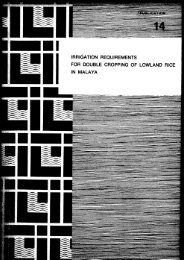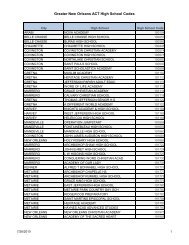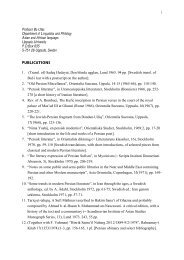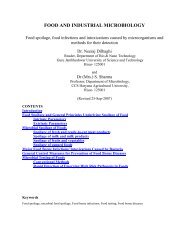On the Future of Indigenous Traditions - Munin
On the Future of Indigenous Traditions - Munin
On the Future of Indigenous Traditions - Munin
Create successful ePaper yourself
Turn your PDF publications into a flip-book with our unique Google optimized e-Paper software.
“Originally, a tribe normally comprised many, <strong>of</strong>ten almost all, <strong>of</strong> <strong>the</strong> possible<br />
pursuits necessary for <strong>the</strong> gaining <strong>of</strong> subsistence. A caste may comprise people that<br />
follow very different pursuits; at least this is <strong>the</strong> case today, and for certain upper<br />
castes this has been <strong>the</strong> case since very early times.” 83 Very <strong>of</strong>ten, even today, ‘caste’<br />
and ‘way <strong>of</strong> earning a living’ are so firmly linked that a change <strong>of</strong> occupation is corelated<br />
with division <strong>of</strong> caste. This is not <strong>the</strong> case for a ‘tribe’. 84 This is a very basic<br />
difference that can be observed in <strong>the</strong> social organization <strong>of</strong> people in Jharkhand too,<br />
when it comes to <strong>the</strong> issue <strong>of</strong> Adivasi (tribe) and <strong>the</strong> non-Adivasis (caste) groups and<br />
<strong>the</strong>ir political associations.<br />
By employing Weber’s explanation, one can conclude that <strong>the</strong> caste system <strong>of</strong> <strong>the</strong><br />
Hindu society and <strong>the</strong> collective communitarian system <strong>of</strong> <strong>the</strong> ‘tribes’ have different<br />
structural founding. In this case when <strong>the</strong>re are different social organizations <strong>of</strong> <strong>the</strong><br />
two peoples who have different orientations and a long history <strong>of</strong> conflicts, <strong>the</strong>re is a<br />
need to have a system <strong>of</strong> administration that would serve different interests. Fur<strong>the</strong>r<br />
<strong>the</strong> issue <strong>of</strong> <strong>the</strong>ir organizations having <strong>the</strong>se two orientations we can reiterate from<br />
Weber’s explanation, when he says,<br />
“It is decisive for a tribe that it is originally and normally a political association. The<br />
tribe ei<strong>the</strong>r forms a independent association, as is originally always <strong>the</strong> case, or <strong>the</strong><br />
association in part <strong>of</strong> a tribal league; or, it may constitute a phyle, that is part <strong>of</strong> a<br />
political association commissioned with certain political tasks and having certain<br />
rights: franchise, holding quotas <strong>of</strong> <strong>the</strong> political <strong>of</strong>fices, and <strong>the</strong> right <strong>of</strong> assuming its<br />
share on turn <strong>of</strong> political, fiscal, and liturgical obligations.” 85<br />
Talking about Adivasis’ independent association, I have looked into <strong>the</strong> recent<br />
historical sources with which it can, no doubt, be established that <strong>the</strong> Adivasis <strong>of</strong><br />
Jharkhand always have had, in <strong>the</strong>ir system, an independent political association<br />
reflected in <strong>the</strong>ir customary practices. (Most <strong>of</strong> <strong>the</strong> references have already been made<br />
here) Their association has also been firm on certain principles but has been adaptable<br />
83 Ibid., 398.<br />
84 Ibid.<br />
85 Ibid.<br />
59

















